For the past several years I’ve been publishing various versions of the “11 Hottest Tech Trends of 1776.” This year, I thought it would be fun to ask ChatGPT for some help. So I asked it to read the previous versions of the article and if it could “think of any other technological advancements between 1750 and 1800 that would be a good addition to this story.” It could and it did. So here, for your Independence Day reading pleasure, are the 18 hottest tech trends circa 1776.
A little more than 247 years ago, our forefathers used the best technology available to inspire colonial proto-Americans to revolt against King George. At that time, the “best” technology available was the printing press and the “best” social network required the use of “word of mouth” in Public Houses. Grog was the lubricant that facilitated this communication and the rest, as they say, is history.
But while all this was going on, there were a bunch of entrepreneurs and a few startups that changed the world. In the 1770s, America was a relatively low tech, agrarian society, but as you can see from the list below, all that was about to change.
1. Underwater Warfare
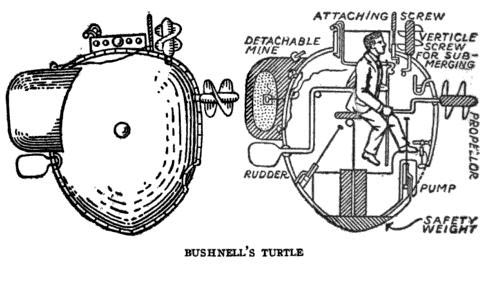
The Submarine – A ship called “The Turtle” was invented by David Bushnell to secretly attach explosives to the undersides of British ships without being noticed. George Washington wasn’t a fan of The Turtle (he thought it was “ungentlemanly”), but still okay’d its use – only to see it unsuccessful in its three attempts to destroy British ships. While “The Turtle” wasn’t a success in and of itself, it was promising enough to lead to further research and development that would one day yield effective underwater vessels.
2. Telling Accurate Time
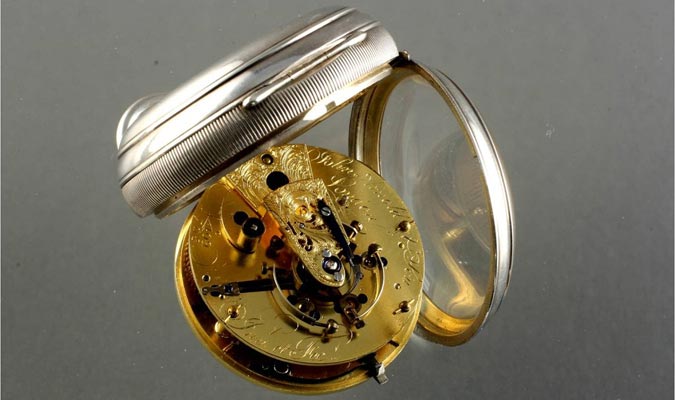
The Chronometer – One major invention of the 18th century was the marine chronometer – a clock that was accurate enough to use as a portable time standard “to determine longitude by means of celestial navigation.” Although the chronometer was first invented in 1737 by John Harrison, who spent more than 30 years of his life on its design, a few Europeans: Pierre Le Roy, Thomas Earnshaw and John Arnold brought it to market. In 1775, Arnold was working on improvements for the device, and took out his first patent for improvements to the device on December 30, 1775.
3. Underwater Exploration
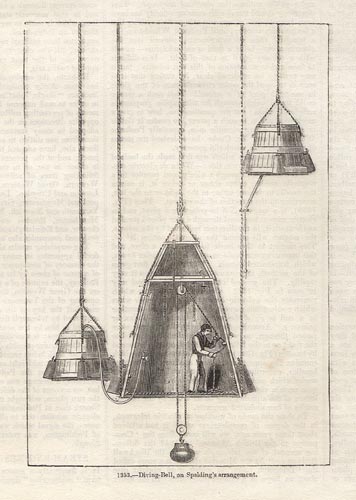
Scuba – Englishman Andrew Becker created a leather-covered diving suit, complete with a helmet that featured a window and a series of tubes for breathing. Becker showed off his device in the River Thames in London, where he was able to breathe underwater for an hour. Around the same time, a French inventor named Fréminet had designed a compressed air reservoir as part of a breathing machine that dragged along behind a diver or mounted on his back. Becker and Fréminet’s inventions were examples of the earliest scuba gear. At the same time, Charles Spalding (of Scotland) developed an improvement to the diving bell by adding a system of balance-weights to make raising and lowering the bell easier.
4. Indoor Plumbing

The Toilet – The modern flush toilet was first proposed in 1596 by Sir John Harrington, but it never truly caught on. However, thanks to the Industrial Revolution, the flushable toilet began to emerge in the late 18th century. Alexander Cummings of Scotland invented the S-trap in 1775, which we still use in our toilets today. The S-trap uses standing water as a seal to prevent smelly air from escaping. Inventor Joseph Bramah (of England) used Cummings’ design when he installed toilets. Bramah improved on Cummings’ design by developing a slide valve with a hinged flap as part of a greater float valve system; Bramah’s model (first patented in 1778) was the “first practical flush toilet” and was used for another 100 years or so.
5. High Tech Major Appliances
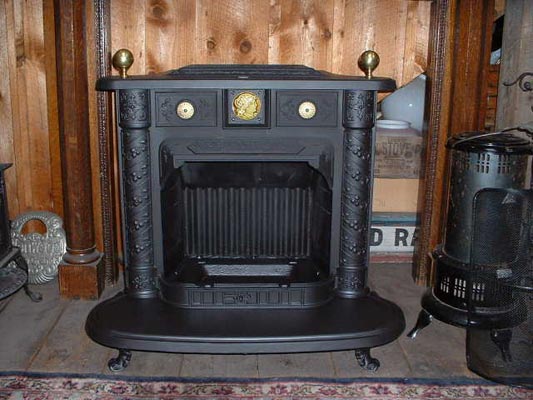
The Kitchen Stove – The Franklin stove, a metal-lined fireplace designed by Benjamin Franklin, was all the rage! Its original purpose was to heat a home during especially brutal New England winters. But the Franklin stove revolutionized home cooking because it allowed families to cook over an open fire without dealing with the smoke that traditionally accompanied that process. Up until Franklin’s inventions, most meat was cooked on a turnspit.
Kitchens in the 18th century also saw a lot of improvements because of rolled sheet iron. Better utensils, fire grates, and the clockwork spit all became possible thanks to this “advanced” metalwork.
6. Electricity

The Lightning Rod – Another one of Franklin’s inventions from the same era would forever change the world of power and energy. In 1749, Franklin invented the lightning rod. Other scientists shared his theory about a link between electricity and lightning, but Franklin’s invention allowed him to be the first to test his hypothesis. His invention saved thousands of lives and millions of dollars worth of buildings. Back then, a lightning strike usually resulted in a conflagration.
7. Mechanical Motion
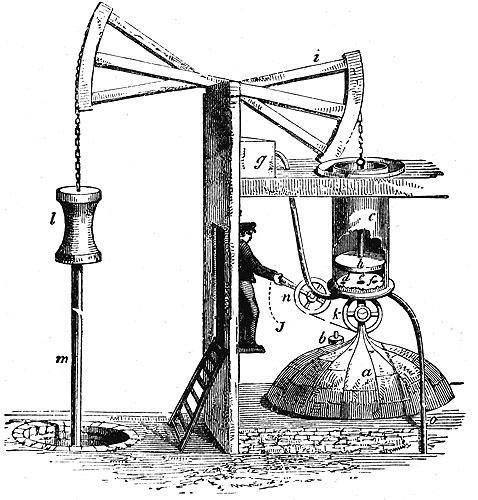
Steam Engines – While mankind has used boiling water to produce mechanical motion for thousands of years, the first steam engine wasn’t patented until 1606. Thomas Newcomen designed the first commercially successful steam engine in the early 1700s, but it was relatively inefficient and used mainly for pumping water. In 1769, James Watt developed an improved version of Newcomen’s engine by adding a separate condenser. Watt continued to work on his design over the next several years, ultimately improving it enough to turn it into a valuable device for manufacturing and helping advance the Industrial Revolution.
There are some who believe, myself included, that harnessing steam power was the single most impactful technological advancement in history – it allowed humans to multiply the power of their muscles by thousands of times. We are on the cusp of the next great transition as we teach machines to multiply the power of our brains by millions or billions of times.
8. Multitasking

Revolving Bookstand – Many of us think of multitasking as a recent trend, but at least one of our founding fathers, Thomas Jefferson, had a need to consume information from multiple sources at “breakneck” speed. According to the Monticello Classroom, “as many as five books could be placed on this bookstand, which was probably made at Monticello according to Jefferson’s design.”
9. Spinning Mule

Spinning Mule – The spinning mule is a machine used to spin cotton and other fibers. They were used extensively from the late 18th to the early 20th century in the mills of Lancashire and elsewhere. Mules were worked in pairs by a minder, with the help of two boys: the little piecer and the big or side piecer. It was invented between 1775 and 1779 by Samuel Crompton.
10. The Cotton Gin

The Cotton Gin – In the same realm as the spinning mule is the cotton gin, patented by Eli Whitney in 1794. The machine revolutionized the production of cotton by removing seeds from cotton fiber, and helped establish the “King Cotton” South and made cotton America’s #1 export. Unfortunately for Whitney, patent infringement issues netted him little money, though his inventing prowess later led him to a job making muskets for the U.S. government and has cemented him as a “pioneer of American manufacturing.”
11. Bubbles! (in water)

Soda Water – In search of a remedy for upset stomachs, English chemist Joseph Priestley became the first person to artificially carbonate water at a Leeds brewery in 1767. He soon published a paper, “Impregnating Water with Fixed Air,” which detailed his process of dripping sulfuric acid into calcium carbonate, which created CO2 gas that was then infused into “agitated water,” thereby creating soda water. While Priestly didn’t popularize soda water — he’s best known for isolating oxygen in its gaseous state — a German watchmaker named Johann Jacob Schweppe (yes, that Schweppe) would simplify and popularize Priestley’s idea a decade or so later.
ChatGPT Plus Additions
12. Hot Air Balloons

The Montgolfier brothers, Joseph-Michel and Jacques-Étienne, invented the hot air balloon in 1783. This was a significant advancement in the field of aviation and marked the beginning of manned flight.
13. The Guillotine

Although it’s a grim invention, the guillotine, invented by Dr. Joseph-Ignace Guillotin in 1789, was a significant technological advancement in its time. It was designed to make capital punishment more humane and efficient.
14. The Threshing Machine

Invented by Andrew Meikle in 1784, the threshing machine revolutionized agriculture by automating the process of separating grain from stalks and husks. This greatly increased efficiency in grain production.
15. Argand Lamp

Invented by Aimé Argand in 1780, the Argand lamp was a significant improvement over previous oil lamps. It provided brighter light and was more efficient due to its innovative design, which included a cylindrical wick and glass chimney.
16. The Sextant

While the sextant was technically invented in the 16th century, it was refined and made more accurate in the 18th century. This tool was crucial for navigation at sea, allowing sailors to measure the angle between an astronomical object and the horizon.
17. The Modern Piano

The piano was invented by Bartolomeo Cristofori in the early 18th century, but it was significantly improved upon throughout the 1700s. By the end of the century, the piano had largely taken the form we recognize today, with a range of over five octaves and the ability to play both soft and loud notes.
18. The Spinning Jenny

Invented by James Hargreaves in 1764, the Spinning Jenny was a key invention in the industrial revolution. It allowed workers to spin more than one ball of yarn or thread at a time, greatly increasing productivity in textile manufacturing.
Felicitations
Hence, I entreat thee, shouldst thou desire to augment thy productivity manifold, do enroll thyself in our gratis online course, Generative AI for Execs. Verily, ’tis a boon for those who seek to harness the power of ChatGPT for their enterprises.
Indeed, I wish ye celebrate America’s independency with our usual entertainments so when next we meet, we can regale our good fortune with the ears of fraternity.
Author’s Declaration: This missive bears no patronage. I, being the scribe of this composition, do put forth mine own sentiments and beliefs. Neither I, nor the establishment I represent, hath received any pecuniary recompense for it.
